The Story of Hyderabad Part 3
- In History & Culture
- 08:01 PM, Oct 08, 2022
- Amogh Manthalkar
The Standstill Agreement
Nizam's eyes were firmly set on establishing his autocratic rule in Hyderabad for a long time. The opportunity to do that presented itself to him when the British decided to end their paramountcy in India. He claimed that since the British paramountcy was ending, he would be the paramount power in Hyderabad State. In his Firman dating June 11, 1947, he declared his intention not to participate in the Constituent Assembly of India and not to join the Union of India. Under pressure from the religious fundamentalist elements within the Ittehad, he dismissed Sir Mirza Ismail from the position of Diwan and appointed Nawab of Chhattar in his place.
Soon, negotiations with India started to finalize the relationship of Hyderabad State with the (eventual) Union of India. A delegation consisting of the Diwan Nawab of Chhattari, Sir Walter Monckton, Sir Sultan Ahmed, and Nawab Ali Yavar Jung came to Delhi, representing the Nizam. By 15th August 1947, no agreement had been reached. The negotiations soon resumed between the Chhattari delegation and the Governor-General Lord Mountbatten. In the course of these discussions, the Chhattari delegation let it be known that the association of the Hyderabad State with the Dominion of India should be different from that of the other Indian States and that there should be a Standstill Agreement for one year so that a more permanent association could be negotiated.
On 18th October 1947, a draft agreement was finalized between the Chhattari delegation and the Indian Dominion. However, on the 27th, when the delegation was to fly back to Delhi from Hyderabad after obtaining the signature of the Nizam, the house where the members of the delegation were residing was surrounded by the Razakars with the full cooperation of the police and were prevented from leaving the house.
As a result, the Nizam called upon Qasim Rizvi, who is briefly mentioned as the leader of the Ittehad and the chief of the Razakars, to solve this deadlock. This Qasim Rizvi was later imprisoned by the Indian police and migrated to Pakistan as negotiated as a condition of his release in 1957. The Chhattari delegation was dissolved under pressure from the Ittehad and a new one was constituted, which included Nawab Moin Nawaz Jung and Mr Abdul Rahim, along with 2 members of the old Executive Council who had voted against the Standstill agreement. This new delegation tried to secure a new agreement with a few changes but failed. It is amply clear from these developments that the Nizam and the ruling group around him wanted to accept a Standstill agreement as it stood with no intention of fulfilling it. The Standstill agreement negotiated by the Chhattari delegation was finally signed on 29th Nov 1947.
It was now upon the Ittehad Ministry to implement the agreement in the State, which they were determined not to, while the Government of India had started to do so. They began to withdraw the Indian Army stationed in Hyderabad State as a part of the agreement, which was the strongest sanction they had to secure the implementation of the Standstill agreement by the Nizam
A Brief Timeline of Negotiations During the Standstill
Once the Standstill agreement was signed, it was understood that its implementation would have to start immediately and discussions for a permanent solution would take place between the Nizam and the Indian Dominion. The government of India started to withdraw the army stationed in Hyderabad State, knowing full well that it was the strongest deterrent against a threat to law and order in the State. This showed that the Indian side wanted to honour the agreement in letter and spirit in good faith and expected the Nizam to do the same. Meanwhile, the Nizam only wanted to seek this opportunity to let the Army withdraw from the State, after which he could carry out his plans to declare independence from India. This would be proven by the subsequent developments in the State.
- 22 January 1948: Negotiations started between Mir Laik Ali, the Diwan of the Nizam, and Mr K M Munshi, India's Agent-General at Hyderabad, for implementing the Standstill agreement. Laik Ali sought early implementation of a few steps by the government of India so that they could ensure the:
- removal of the Indian Army stationed in Bolarum
- allowing free flow into Hyderabad of goods, including military equipment purchased in India by the Nizam's government
- supplying arms and ammunition for its (the State's) army
- transferring the control of postal, telephone, and telegraph communications passing through Hyderabad that connected South India with North India.
Several of these steps were against the conditions of the Standstill agreement, like the total disregard of the obligations placed upon the Nizam's government under the State Forces Scheme of 1939, which put limits on the size of the standing army and amount of arms and ammunition that the State could obtain. The reason cited for this was that the whole scheme lapsed with the end of the British paramountcy. They also breached the Standstill agreement by negotiating an agreement with the Pakistan government for advancing a loan of Rs 20 crores and by trying to bring in an ordinance banning Indian currency in the State.
- 4 March 1948: The Governor-General suggested to a delegation of the Nizam that his government ban the Razakar organization as it was a danger to security. The delegation gave no assurances regarding this. Laik Ali, who was a part of the delegation, however, assured the Governor-General that a more representative Ministry would be set up in Hyderabad to negotiate a permanent solution, which he formally announced on coming back to Hyderabad. Qasim Rizvi, the president of the Ittehad, who had always been working with him announced that he would not be participating in any conferences where it would be discussed. The leader of the Hyderabad State Congress, Swami Ramanand Teertha, then in jail was not released. So, even though the Nizam gave all sorts of assurances to India, they had no intention of implementing them.
Laik Ali resumed the negotiation with K M Munshi. It was observed that Laik Ali's only anxiety was to secure an immediate supply of 25,000 soldiers and 35,000 police, modern arms and equipment, and a free flow of military stores, into the State that the Nizam's government had purchased in large quantities all over India (in breach of various agreements and acts). He was adamant that the negotiations could not proceed without settling these demands by the Indian Dominion. - 23 March 1948: The Razakars ran amok in the entire State unleashing a reign of terror, not just within the borders of the State, but also across the borders. The government of India insisted that the Razakars had to be stopped. In a letter addressed to Laik Ali, the government of India pointed out the breaches of the Standstill agreement committed by Nizam's government and the atrocities perpetrated by the Ittehad and the Razakars demanding action against them.
- 5 April 1948: Laik Ali addressed a letter to Mr Jawaharlal Nehru justifying the charges made against the State. In particular, he refused to be bound by the Indian State Forces Scheme of 1939 and to disband the Razakar organization. Then, he travelled to Delhi and met with the Prime Minister, who made it clear to him that the Razakars had to be brought under control and the State Congress leaders must be released as a prerogative to a new and representative government to be formed in the State. Laik Ali accepted these conditions but no action was taken to fulfil them.
- 15 May 1948: The government of India called upon the Nizam to disband and ban the Razakar organization owing to their terrorist tactics and actions. The Nizam refused to do that. Troops of the Indian Army were stationed on the borders of the State to prevent incursions or cross-border raids by Razakars.
- 26 May 1948: Laik Ali agreed to the principle that the legislation passed by the government of India regarding 3 subjects, Defence, External Affairs, and Communications, should automatically apply to Hyderabad, should the Nizam fail to pass corresponding legislation. He later denied agreeing to it.
- 6 June 1948: Laik Ali and Sir Walter Monckton return to Delhi to continue negotiations. Draft heads of agreement and a draft Firman were prepared. There were disagreements about whether the representative government in Hyderabad would have equal representation for Hindus and Muslims (84% and 12.4% of the population, for reference).
- 14 June 1948: Laik Ali arrives in Delhi with his delegation. They demand the following:
- permission for Hyderabad to maintain a regular army of 20,000 and 8,000 irregulars
- a period of 3 months to disband the Razakars
These demands were accepted by the government of India without exception in the interest of peace and in their anxiety to settle. The next day, another trivial point was raised by Laik Ali, which was not accepted. The government of India made it clear that no further amendments would be entertained.
- 16 June 1948: Laik Ali returned to Hyderabad with the draft agreement and the draft Firman. The Nizam sent a telegram refusing to accept the agreements unless a few new points were accepted. He also alleged that the government of India had made changes to the draft and the Firman without the knowledge of Laik Ali, which he discovered only after returning to Hyderabad. Sir Walter Monckton proved these allegations false and the Nizam then withdrew these allegations.
- 18 June 1948: Lord Mountbatten, 3 days before he left India, sent a long, unofficial, and private telegram to the Nizam, appealing to him to accept the draft agreement in the interest of peace in the whole of South India. The Nizam refused his appeal, citing trivial reasons which made no material difference to the draft agreement.
The government of India could draw no other conclusion but that the Nizam was delaying and being disingenuous to avoid admitting that he was unwilling to accept any of the provisions in the agreement.
Betrayal and Mayhem
Meanwhile, the Razakars continued their reign of terror all over the State. There exists a catalogue of all border incidents which were reported to the Hyderabad government, along all 3 borders, Bombay, Central Provinces, and Madras. One can find 151 detailed instances of loot, forceful possession, murder, torture, molestation, theft, and other forms of violence reported between January and July of 1948, just in the White Paper on Hyderabad of 1948 itself. One must keep in mind that these are the reported cases of Razakar atrocities. There may have been many more that were never reported.
The detail is so minute that there are dates and complaint numbers assigned to each of the available ones. They also mention that the perpetrators of these atrocities were not the Razakars alone. They were often assisted by the State police, military, and even commoners who felt the call for Jihad deep inside themselves. One of the main conditions for the Standstill agreement and eventually a permanent solution was the disbandment of Razakars and the crushing of these terror activities.
These are all cases of cross-border raids, instances of violence and plundering into the Indian Dominion territory. These are quite similar to cross-border incursions and terrorism we see along the modern India-Pakistan border. There are allegations that the annexation of Hyderabad was forced by the Indian Dominion side, that the Indian Dominion was the aggressor and expansionist. That it deprived the Hyderabad State of its right over its territory and people. The facts point to the opposite.
In his letter of resignation to the Diwan of the State, Mr J V Joshi, a minister in the State, alleges breach of the Standstill agreement by the Razakars and gives a detailed account of the atrocities they had perpetrated in the districts toured, namely Jalna, Aurangabad, Parbhani, and Nanded. The State police had joined the Razakars in their atrocities of loot, arson, murder, rape, and molestation of women. The lives of Hindus in the State had become hell, to the point that many Hindus migrated out of the State.
“I joined the Government in the hope that I would be able to do some service to bring about communal harmony and progress in the State. On account of my great respect for Qasim Rizvi, I continued to believe you and him that the complaints against Razakars were all fake, but I have seen things for myself. A complete reign of terror prevails in Parbhani and Nanded districts. I have seen in Loha. a scene of devastation, which brought tears to my eyes—Brahmins were killed, and their eyes were taken out. Women had been raped, houses had been burnt down in large numbers. My heart wrung in anguish.”
Mr J V Joshi’s letter of resignation from the Nizam’s Cabinet, 23rd July 1948
Nizam and his administration didn't give assurances to disband the Razakars, and when they did, they had no intention of implementing them. This meant the betrayal of not only the agreement between the Nizam and the Indian Dominion but also that of the people of Hyderabad State. When a government betrays its people or fails to protect them, it creates a situation of terror. Fear of the Razakars caused a mass exodus of Hindus from Hyderabad State to the neighbouring states.
The borders of Hyderabad State with its neighbours are not marked by geographical features. That meant that the borders were ambiguous. Several Dominion villages were within the State territory. Residents of such villages lived under constant fear of Razakar raids. Many left their homes, farms, and livestock behind to migrate to other states. Several requests were made to the Nizam to ensure that these people were settled back and the property that the Razakars illegally grabbed and handed over to Muslims from the State would be given back to them. It should not come as a surprise that the Nizam never agreed to it.
The leader of the Razakars, Qasim Rizvi, was imprisoned after the police action of September 1948. He was in jail till 1957, when he agreed to migrate to Pakistan upon release, which he did. The Ittehad, or the Majlis-e-Ittehad-ul-Muslimeen, was banned in 1948. In 1957, Rizvi, before leaving for Pakistan, handed over the responsibility of whatever was remaining of the MIM to a lawyer from Hyderabad, Abdul Wahed Owaisi, who rebranded it as the All India Majlis-e-Ittehad-ul-Muslimeen, or AIMIM, which is still a political party in Hyderabad. The leader of that party is Asaduddin Owaisi, who is the grandson of Abdul Wahed Owaisi.
In Conclusion
It is not my case that the present AIMIM is the same as the MIM or that its workers are the same as the Razakars. But it must be understood that the rebranding of the party is not as comprehensive as it is made out to be. The name that the party uses is the same, MIM. If one were to venture a guess, one could say that Abdul Wahed Owaisi wanted to change the ideology to suit the changed narrative in an independent India of which Hyderabad State was now a part. But he did not want to change the name too much to capitalize on the popularity of the pre-liberation Hyderabad Ittehad. And that is a topic for another day, the popularity of the Ittehad, the sudden integration of the State in India, and its effect on the supporters of the Ittehad.
In several documents and letters, even during the British Raj, it has been mentioned that the destiny of Hyderabad was inextricably linked with that of India.
"Flung completely across the Indian peninsula, the great State of Hyderabad holds a strategic position of the first importance both from the political and from the military point of view. In an emergency, it could practically isolate the South from the North."
The Princes of India, by Sir William Barton
The White Paper on Hyderabad of 1948, states that the State has never been an independent entity, but has always been an integral part of India. It also explains in detail how there is complete unity between Hyderabad and the rest of India, of geography, culture, economy, politics, currency, foreign exchange, and banking. Any pretensions that either the Nizam or the Ittehad may have had about its independence from India were based on shaky grounds. And it would be impossible to imagine a stable India that contained an independent Hyderabad, which would be on the side of Pakistan, politically, since the Ittehad and the Muslim League could be understood as the same side of 2 coins.
Earlier this year, the movie Kashmir Files shot to popularity, owing to its honest subject matter about a very real ethnic cleansing in Kashmir. The stories told in the movie were passed down by the few people who managed to survive and settle elsewhere. The tragedy was recent and yet a large section of our society was not aware of the brutality that was unleashed by terrorists backed by Pakistan and aided and abetted by regular Muslims in the state, under fear or otherwise.
The incessant harassment of Hindus by the Razakars, aided by the State police, military and civilians alike, caused massive exodus of people from the State to the Indian Dominion territories. The Razakars took over people’s homes and farms and handed them over to Muslims. People from across the border of the State were abducted and held for ransom. Cows, goats, food grains, and goods of all kinds were stolen or grabbed by force and carried off. These are not even army-like acts. These are acts of looters and criminal elements, motivated by the desire not just to militarily subjugate an enemy, but also humiliate them. As is evident from several instances, people were not just kidnapped and killed, but they were tortured, their eyes gouged out or their bodies beaten till they died.
A tragedy was perpetrated in the heart of India, in Hyderabad, 75 years ago. Who knows how many similar stories of tragedy, violence, and mayhem were lost? Very few people who are old enough to have seen the year 1947 are alive, fewer still who were of an age to understand what was going on around them. Whatever history of the time is available is only available as book records. Hardly any new stories can be uncovered.
I am not asking the reader to get lost in history and try to correct the wrongs of the time by taking retributive action today. I only seek to make the point that the freedom that we enjoy as people who come from the erstwhile Hyderabad State was hard-earned and that it took more than a year from 15th August 1947 to win it. The State of Hyderabad and its accession (annexation, as some call it) is a chapter of Indian history that does not get brought up as often as it ought to.
The least that can be done is to honour the victims of the tragedy by building monuments, similar to the Holocaust Museums we see to remember what the Jews went through. The university in Nanded is named after the president of the Hyderabad State Congress, Swami Ramanand Tirth Marathwada University. This is a small tribute to the sacrifices made by him and his associates, who struggled against the last Nizam at such a time when there were severe restrictions on fundamental rights of people in the State. Basics liberties like freedom of association were suppressed. Hundreds of people, with a zeal for nothing other than liberation of the Hyderabad State, stood against such oppression and earned the freedom that we enjoy today. State governments of the 4 states in modern India that were directly affected by the Nizam’s State must have details of the history of the years between 1919 and 1948, at the very least, so that there is some background of the events that shaped their states in the way that they did, lest we forget the sacrifices of the heroes of this struggle, the Swatantrya Sangram of Hyderabad, that liberated more than 1 crore people more than a year after 15th August, 1947.
Image source: The Companion










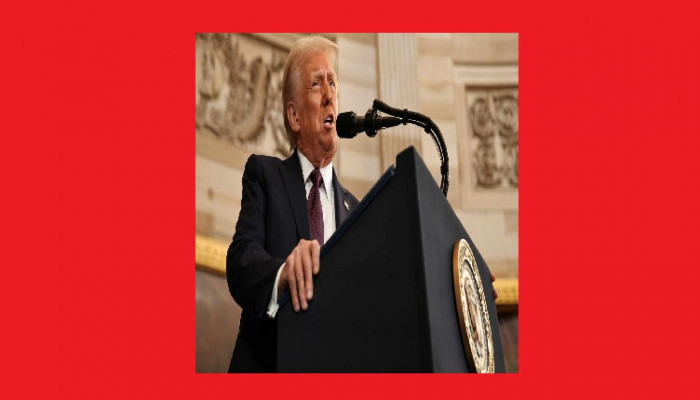

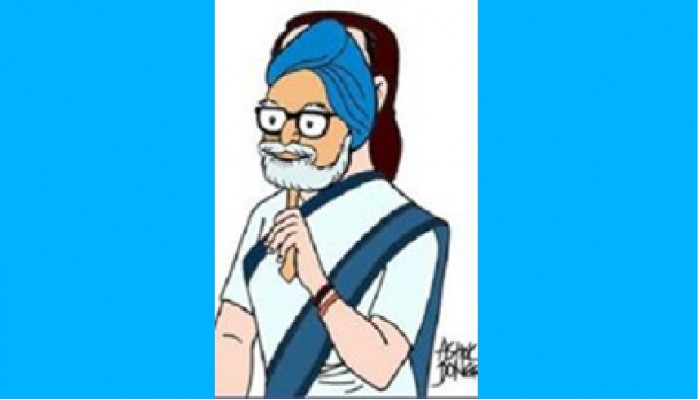





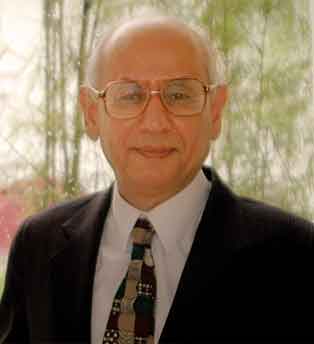




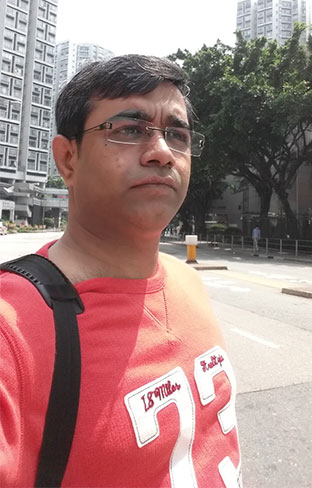

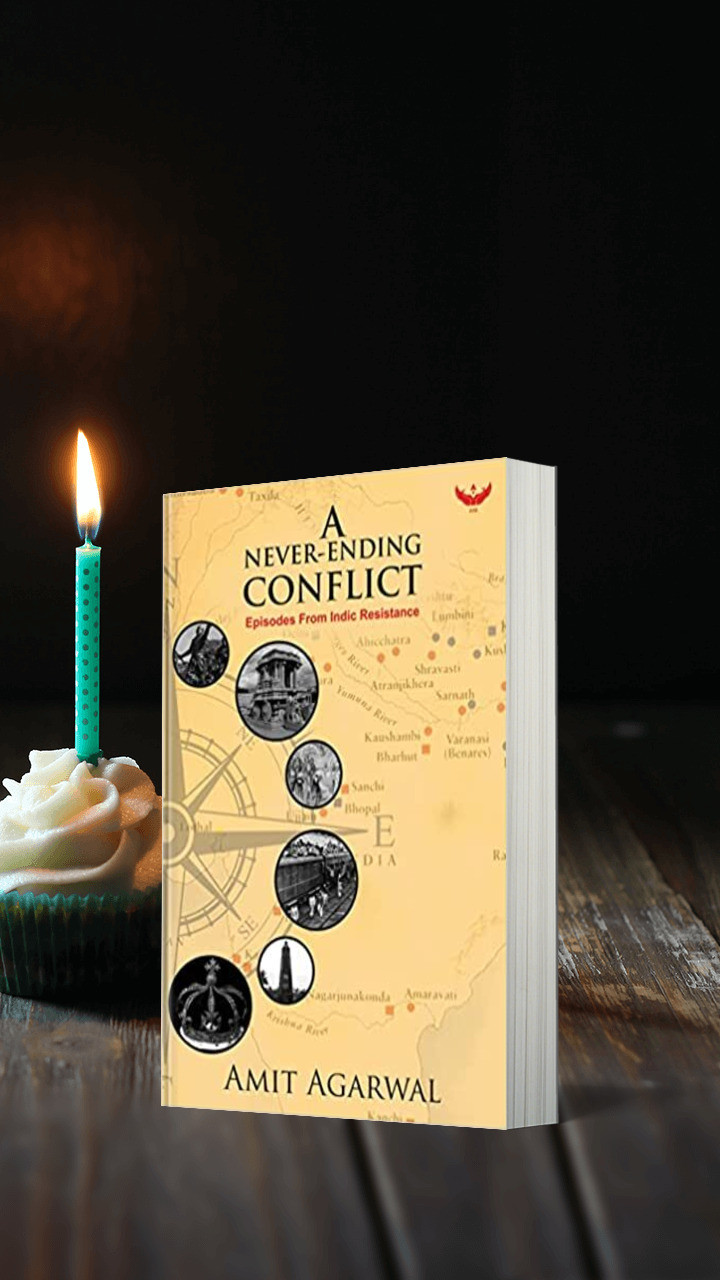

Comments